Dedication
In Memoriam
Contributors
Foreword to the First Edition
Foreword to the Second Edition
Foreword to the Third Edition
Foreword to the Fourth Edition
Preface
Section I Biophysical Chemistry, Metabolism, Second Messengers, and Ultrastructure
Chapter 1. Biophysical Chemistry of Physiological Solutions
I Summary
II Introduction
III Structure and Properties of Water
IV Interactions Between Water and Ions
V Protons in Solution
VI Interactions Between Ions
VII Solute Transport: Basic Definitions
VIII Measurement of Electrolytes and Membrane Potential
Appendix: Thermodynamics of Membrane Transport
AII Nernst Equilibrium
BIBLIOGRAPHY
Chapter 2. Physiological Structure and Function of Proteins
I Summary
II Molecular Structure of Proteins
III Techniques for the Determination of the Structures of Proteins
IV Bulk Properties of Proteins: Proteins as Polyelectrolytes
V Relationship of Protein Structure to Function
BIBLIOGRAPHY
Chapter 3. Cell Membranes
I Summary
II The Bimolecular Lipid Membrane
III Membrane Lipids and Proteins
IV The Fluid Mosaic Model of Cell Membranes
BIBLIOGRAPHY
Chapter 4. Ionophores in Planar Lipid Bilayers
I Summary
II Ionophores
III Planar Lipid Bilayers
IV Ion Channel Properties in Planar Lipid Bilayers
V Gramicidin
BIBLIOGRAPHY
Chapter 5. Cell Structure
I Introduction
II Techniques
III Cell Theory
IV The Plasma Membrane as the Basis of Cellularity
V Nucleus
VI Endoplasmic Reticulum
VII Golgi Apparatus
VIII Lysosomes
IX Mitochondria
X Cytoskeleton
XI Cell Junctions
XII Special Tissues, Specialized Ultrastructure
Acknowledgments
BIBLIOGRAPHY
Chapter 6. Signal Transduction and Second Messengers
I What is Signal Transduction?
II General Principles
III General Types of Signal Transduction Cascades and their Components
IV Phosphorylation by Kinases and Other Post-translational Modifications
V Intracellular Signal Transduction Pathways
VI Conclusions
BIBLIOGRAPHY
Chapter 7. Calcium as an Intracellular Second Messenger
I Introduction
II Determination of Ca2+ Involvement in Physiological Processes
III Ca2+ as an Intracellular Signal
IV Creation of the Ca2+ Signal
V Mediation of the Ca2+ Signal
VI Ca2+-Calmodulin Dependent Protein Kinase II
VII Annexins: Calcium-Dependent Phospholipid-Binding Proteins
VIII Protein Kinase C
IX Current Perspectives
X Summary
BIBLIOGRAPHY
Section II Membrane Potential, Transport Physiology, Pumps, and Exchangers
Chapter 8. Diffusion and Permeability
I Summary
II Introduction
III Fick’s Law of Diffusion
IV Diffusion Coefficient
V Diffusion Across a Membrane with Partitioning
VI Permeability Coefficient
VII Electrodiffusion
VIII Special Transport Processes
IX Ussing Flux Ratio Equation
BIBLIOGRAPHY
Chapter 9. Origin of Resting Membrane Potentials
I Summary
II Introduction
III Passive Electrical Properties
IV Maintenance of Ion Distributions
V Equilibrium Potentials
VI Electrochemical Driving Forces and Membrane Ionic Currents
VII Determination of Resting Potential and Net Diffusion Potential (Ediff)
VIII Electrogenic Sodium Pump Potentials
Appendix
AII Derivation of Nernst Equation
AIII Half-Cell Potentials
AIV Constant-Field Equation Details
AV Derivation of Chord Conductance Equation
AVI Circuit Analysis Applicable to Cell Membrane
BIBLIOGRAPHY
Chapter 10. Gibbs–Donnan Equilibrium Potentials
I Summary
II Introduction
III Mechanism for Development of the Gibbs–Donnan Potential
IV Gibbs–Donnan Equilibrium
V Quantitation of the Gibbs–Donnan Potential
VI Osmotic Considerations
BIBLIOGRAPHY
Chapter 11. Mechanisms of Carrier-Mediated Transport
I Summary
II Introduction
III Electrochemical Potential
IV Carrier-Mediated Transport Mechanisms
BIBLIOGRAPHY
Chapter 12. Active Ion Transport by ATP-Driven Ion Pumps
I Summary
II Introduction
III Classes of ATP-driven Ion Pumps
IV The Albers–Post Mechanism of Ion Transport by P-type Ion Pumps
V Structures of P-type Ion Pumps
VI Beta Subunits
VII Isoforms of Pump Subunits and Subfamilies of P-type Pumps
VIII FXYD Proteins
IX Regulation of P-type ATPase Activity
X Pharmacological Inhibitors of P-type ATPases
BIBLIOGRAPHY
Chapter 13. Ca-ATPases
I Introduction
II Sarcoplasmic Reticular (SR) Ca2+-ATPase
III Other ATPases
IV Overview
Acknowledgments
BIBLIOGRAPHY
Chapter 14. Na-Ca Exchange Currents
I Summary
II Introduction
III Energetics of Na+-Ca2+ Exchange
IV Methods and Problems Associated with the Measurement of Na+-Ca2+ Exchange Current
V Isolation of Na+-Ca2+ Exchange Current
VI Ionic Dependencies of Na+-Ca2+ Exchange Current
VII Regulation of Na+-Ca2+ Exchange Current
VIII Structure of NCX and its Relationship to Function
IX The Phylogeny of the Na+-Ca2+ Exchanger
X Isoforms of the Na+-Ca2+ Exchanger
XI Current–Voltage Relationships and Voltage Dependence of Na+-Ca2+ Exchange Current
XII Mechanism of Na+-Ca2+ Exchange
XIII Na+-Ca2+ Exchange Currents During the Cardiac Action Potential
XIV Na+-Ca2+ Exchange Currents and Excitation–Contraction Coupling
BIBLIOGRAPHY
Chapter 15. Intracellular Chloride Regulation
I Introduction
II Origin of the Passive Cl− Distribution Assumption
III Passive and Non-passive Cl− Distribution Across the Plasma Membrane
IV Active Transport Mechanisms for Cl−
V Electroneutral Na+-K+-Cl− Cotransporters
VI Electroneutral K+-Cl− Cotransporters
VII Electroneutral Na+-Cl− Cotransporter
Acknowledgments
BIBLIOGRAPHY
Chapter 16. Osmosis and Regulation of Cell Volume
I Summary
II Introduction
III Water Movement Across Model Membranes
IV Mechanisms of Osmosis
V Water Movement Across Cell Membranes
VI Regulation of Cell Volume under Isosmotic Conditions
VII Regulation of Cell Volume under Anisosmotic Conditions
Acknowledgments
BIBLIOGRAPHY
Chapter 17. Intracellular pH Regulation
I Summary
II Introduction
III pH and Buffering Power
IV Intracellular pH
V Organellar pH
VI Maintenance of a Steady-State pHi
VII Active Membrane Transport of Acids and Bases
VIII Cellular Functions Affected by Intracellular pH
BIBLIOGRAPHY
Section III Membrane Excitability and Ion Channels
Chapter 18. Cable Properties and Propagation of Action Potentials
I Summary
II Introduction
III Frequency-Modulated Signals
IV Cable Properties
V Conduction of Action Potentials
VI External Recording of Action Potentials
Appendix 1 Additional Discussion of Input Resistance and Impedance
Appendix 2 Propagation in Cardiac Muscle and Smooth Muscles
AII Some Experimental Facts
AIII Electric Field Model
AIV Electronic Model for Simulation of Propagation
AV PSpice Model for Simulation of Propagation
BIBLIOGRAPHY
Chapter 19. Electrogenesis of Membrane Excitability
I Summary
II Introduction
III Action Potential Characteristics
IV Electrogenesis of Action Potentials
V Effect of Resting Potential on Action Potential
VI Electrogenesis of Afterpotentials
Appendix
AII Additional Information on K+ Channels
AIII Whole-Cell Voltage Clamp
BIBLIOGRAPHY
Chapter 20. Patch-Clamp Techniques
I Introduction
II Applications of the Patch-Clamp Technique
III Patch-Clamp Techniques
IV Data Acquisition
V Current Recordings and Analysis
VI Automated Patch-clamp
Acknowledgments
BIBLIOGRAPHY
Chapter 21. Structure and Mechanism of Voltage-Gated Ion Channels
I Summary
II Introduction: How Is Ion Channel Structure Studied?
III Biochemistry of Ion Channels: Purification and Characterization of Voltage-Gated Channels
IV Channel Structure Investigation through Manipulation of DNA Sequences Encoding Channel Polypeptides
V Molecular Mechanisms of Channel Function: How Does One Investigate Them?
VI Isoforms of Voltage-Gated Channels as Part of a Large Superfamily
VII Future Directions
BIBLIOGRAPHY
Chapter 22. Biology of Gap Junctions
I Introduction
II Advantages of Electrical Synapses in Excitable Cells
III Ubiquitous Membrane Permeable Junctions
IV Structural Candidates for the Permeable Cell Junction
V Ultrastructural Characterization of Gap Junctions and Correlations with Cell Coupling
VI Molecular and Structural Studies of Gap Junction Proteins
VII Two Large Families of Gap Junction Proteins
VIII Channels within Gap Junctions
IX Evidence for Charge Selectivity
X Channel Properties of Different Connexins
XI Gating by Ions and Second Messengers
XII Regulation of Functions of Connexin-Based Gap Junctions at Multiple Levels
XIII Specific Biological Functions of Gap Junctions
XIV Gap Junctions in Human Disease and in Murine Models of Human Disease
In Memoriam
BIBLIOGRAPHY
Chapter 23. Regulation of Cardiac Ion Channels by Cyclic Nucleotide-Dependent Phosphorylation
I Summary
II Introduction
III Regulation of the Cardiac L-type Ca2+ Channels by Cyclic AMP
IV Regulation of the L-type Ca2+ Channels by Cyclic GMP
V Phosphodiesterases
VI Compartmentalization of Cyclic Nucleotides
BIBLIOGRAPHY
Chapter 24. Direct Regulation of Ion Channels by GTP-Binding Proteins
I Introduction
II G-Protein-Coupled Receptors
III The G-Protein Cyclic Reaction Mediates Receptor-to-Channel Signal Transmission
IV Electrophysiological Evidence for K+ Channel Activation by G Proteins
V Electrophysiological Properties of KG Channels
VI Direct Coupling of KG Channel Subunits to Gβγ
VII Structural Basis of the Regulation of KG Channel Activity
VIII RGS Proteins Confer Voltage-Dependent Gating on KG Channel
IX Conclusions
BIBLIOGRAPHY
Chapter 25. Developmental Changes in Ion Channels
I Summary
II Introduction
III Cardiomyocytes
IV Skeletal Muscle Fibers
V Neurons
VI Concluding Remarks
BIBLIOGRAPHY
Chapter 26. Regulation of Ion Channel Localization and Activity Through Interactions with the Cytoskeleton
I Summary
II General Introduction
III Mechanisms for Interactions Between the Cytoskeleton and Ion Channels
IV General Conclusions
BIBLIOGRAPHY
Chapter 27. Why are So Many Ion Channels Mechanosensitive?
I Summary
II Introduction
III Eukaryotic MS Channels – Bilayer Structure, Bilayer Deformation
IV Channel Mechanosensitivity – Tuning of Channel Behavior
V VGCS and the Mechanosensitivity of Discrete Transitions
VI Bilayer Structure in X, Y and Z – One LPP Here, Another LPP There
VII Physiology? Read with Caution. Proceed with Caution
BIBLIOGRAPHY
Section IV Ion Channels as Targets for Toxins, Drugs, and Genetic Diseases
Chapter 28. Ion Channels as Targets for Toxins
I Summary
II Introduction
III Voltage-Gated Sodium Channels (VGSCs; NaV1.x)
IV Voltage-Activated and Ca2+-Activated Potassium Channels
V Voltage-Dependent Calcium Channels
VI Other Toxins and Channels
BIBLIOGRAPHY
Chapter 29. Ion Channels as Targets for Drugs
I Summary
II Calcium Channels
III Sodium (Na+) Channels
BIBLIOGRAPHY
Chapter 30. Inherited Diseases of Ion Transport
I Summary
II Introduction
III Identifying Heritable Mutations Underlying Diseases of Ion Transport
IV Familial Hemiplegic Migraine
V Cystic Fibrosis
VI Long QT Syndrome
VII Myotonia and Periodic Paralysis of Skeletal Muscle
VIII Malignant Hyperthermia
IX Liddle’s Syndrome
X Bartter Syndrome
BIBLIOGRAPHY
Section V Synaptic Transmission and Sensory Transduction
Chapter 31. Ligand-Gated Ion Channels
I Summary
II Introduction
III Classes of Ligand-Gated Ion Channels
IV Basic Physiological Features
V Molecular Structure
VI Neuronal Acetylcholine Receptor Channels
VII γ-Aminobutyric Acid and Glycine Receptor Channels
VIII Glutamate Receptor Channels
BIBLIOGRAPHY
Chapter 32. Synaptic Transmission
I Summary
II Introduction
III Structure and Function of Chemical Synapses: An Overview
IV Neurotransmission
BIBLIOGRAPHY
Chapter 33. Excitation—Secretion Coupling
I Summary
II Introduction
III Cellular Components Involved in Excitation–Secretion Coupling
IV Cellular and Molecular Events in Chromaffin, Mast Cells and Neuronal Synaptic Vesicles
V Hormone Release in Endocrine Cells
Acknowledgments
BIBLIOGRAPHY
Chapter 34. Stimulus—Response Coupling in Metabolic Sensor Cells
I Introduction
II Stimulus–Secretion Coupling in the Pancreatic Islet Cells
III Metabolic Sensing as Protection from Hypometabolic Injury
IV Stimulus–Secretion Coupling in Carotid Chemoreceptor Cells
V Stimulus–Contraction Coupling in Vascular Smooth Muscle Cells
VI Coupling of Oxygen Sensing to Red Cell Production by Erythropoietin-Secreting Cells
Acknowledgments
BIBLIOGRAPHY
Chapter 35. Cyclic Nucleotide-Gated Ion Channels
I Summary
II Introduction
III Physiological Roles and Locations
IV Control by Cyclic Nucleotide Enzyme Cascades
V Functional Properties
VI Molecular Structure
VII Functional Modulation
BIBLIOGRAPHY
Chapter 36. Sensory Receptors and Mechanotransduction
I Introduction
II Sensory Transduction
III Sensory Adaptation
IV Information Transmission by Sensory Receptors
V Mechanoreceptors
VI Experimental Mechanoreceptor Preparations
VII Steps in Mechanoreception
VIII Efferent Control of Mechanoreceptors
IX Conclusions
BIBLIOGRAPHY
Chapter 37. Acoustic Transduction
I Summary
II Introduction
III Mammalian Inner Ear Structure
IV Cell Physiology of Endolymph Homeostasis
V Genetic Basis of Deafness
VI Cell Physiology of Acoustic Transduction
VII Concluding Remarks
Acknowledgment
BIBLIOGRAPHY
Chapter 38. Visual Transduction
I Summary
II Introduction
III Photoreceptor Cells
IV Physiology of Visual Transduction
V Molecular Mechanisms
BIBLIOGRAPHY
Chapter 39. Gustatory and Olfactory Sensory Transduction
I Summary
II Introduction
III Taste Receptor Cells
IV Olfactory Receptor Cells
BIBLIOGRAPHY
Chapter 40. Infrared Sensory Organs
I Summary
II Introduction
III Nature of the Stimulus: What is Infrared (IR) Radiation?
IV Infrared-Sensitive Pit Organs in Snakes
BIBLIOGRAPHY
Chapter 41. Electroreceptors and Magnetoreceptors
I Summary
II Introduction
III Ampullary Electroreceptors
IV Tuberous Electroreceptors
BIBLIOGRAPHY
Section VI Muscle and Other Contractile Systems
Chapter 42. Skeletal Muscle Excitability
I Summary
II Introduction
III General Overview of Electrogenesis of the Action Potential
IV Ion Channel Activation and Inactivation
V Slow Delayed Rectifier K+ Current
VI Mechanisms of Repolarization
VII ATP-Dependent K+ Channels
VIII Electrogenesis of Depolarizing Afterpotentials
IX Ca2+-Dependent Slow Action Potentials
X Developmental Changes in Membrane Properties
XI Electrogenic Na+-K+ Pump Stimulation
XII Slow Fibers
XIII Conduction of the Action Potential
XIV Excitation Delivery to Fiber Interior by Conduction into the T-Tubular System
Appendix
AII More Information on KATP Channels
AIII Further Evidence that the T-Tubules Fire Na+-Dependent APS
AIV Propagation Velocity in a Passive Cable
AV Evidence for T-Tubule Communication with the SR across the Triadic Junction under Some Conditions
AVI Invertebrate Striated Muscle Fibers
BIBLIOGRAPHY
Chapter 43. Cardiac Action Potentials
I Summary
II Introduction
III Resting Membrane Potential
IV Currents During the Action Potential Phases
V Additional Currents Contributing to the Action Potential
VI Regional Differences in Action Potentials
VII Automaticity
VIII Channelopathies
BIBLIOGRAPHY
Chapter 44. Smooth Muscle Excitability
I Introduction
II Determination of Resting Membrane Potential in SMCS
III Potassium Channels
IV Voltage-Dependent Calcium Channels
V Transient Receptor Potential (TRP) Channels
VI Excitation of Gastrointestinal SMCS
VII Airway Smooth Muscle
VIII Concluding Remarks
Acknowledgments
BIBLIOGRAPHY
Chapter 45. Excitation—Contraction Coupling in Skeletal Muscle
I Summary
II Introduction
III Overview of EC Coupling
IV Speed of Skeletal Muscle Activation
V Membrane Architecture of EC Coupling
VI The DHPR Protein
VII The Ryanodine Receptor
VIII Physiological Interactions Between the DHPR and RyR1
Acknowledgment
BIBLIOGRAPHY
Chapter 46. Contraction of Muscles
I Summary
II Introduction
III The Mechanisms of Force Production and Shortening: Muscle Mechanics
IV Muscle Energetics
V Muscle Metabolism
VI Comparative Mechanochemical Function
BIBLIOGRAPHY
Chapter 47. Flagella, Cilia, Actin- and Centrin-based Movement
I Introduction
II Bacterial flagella
III Cilia
IV Non-Muscle Actin
V Biological Springs
VI Cannons
VII A Few Lessons Learned
BIBLIOGRAPHY
Chapter 48. Electrocytes of Electric Fish
I Summary
II Introduction
III Anatomy of Electrophorus and Mechanism of the Electrical Discharge
IV Electrocyte Membrane Electrophysiology
V Comparative Physiology of Electrophorus and Torpedo – Models for Mammalian Excitable Cells
BIBLIOGRAPHY
Section VII Protozoa and Bacteria
Chapter 49. Physiological Adaptations of Protists
I Introduction: Terminology and Phylogeny
II Biophysical Constraints of Scale: the Example of Filter-Feeding
III Nutrition and Excretion
IV Energetic Adaptations: Mitochondria and their Relatives
V Sensory Adaptations, Membrane Potentials and Ion Channels
VI Incorporation of Physiological Units from Other Cells
VII Structures with Unknown Functions
VIII Coordinated Protistan Responses to Gravity and to Gradients of Oxygen and Light: an Example from Physiological Ecology
IX Summary: Protistan Diversity
Acknowledgments
BIBLIOGRAPHY
Chapter 50. Physiology of Prokaryotic Cells
I The Diversity of Prokaryotic Organisms
II Prokaryotic Cytology
III Energetics of Bacterial Cells
IV Solute Transport
V Metabolic Strategies
VI Responding to the Environment
VII The Physiology of Pathogenesis
VIII Prokaryotes Living in Extreme Environments
IX Conclusions
BIBLIOGRAPHY
Section VIII Specialized Processes: Photosynthesis and Bioluminescence
Chapter 51. Photosynthesis
I Summary
II Introduction
III Chloroplasts
IV Biochemistry of Carbon Assimilation
V Formation of ATP
VI Photosynthetic Electron Transport
VII Regulation of Photosynthesis
BIBLIOGRAPHY
Chapter 52. Bioluminescence
I Summary
II Introduction
III What is Bioluminescence? Physical and Chemical Mechanisms
IV Luminous Organisms: Abundance, Diversity and Distribution
V Functions of Bioluminescence
VI Bacterial Luminescence
VII Dinoflagellate Luminescence
VIII Coelenterates and Ctenophores
IX Firefly Luminescence
X Other Organisms: Other Chemistries
XI Applications of Bioluminescence
XII Concluding Remarks
BIBLIOGRAPHY
Appendix: Excitability of Smooth Muscles: Some Basic Facts
I Fast Na+ Channels in Smooth Muscle Cells
II Propagation of Overshooting Action Potentials in Intestinal Smooth Muscle
III Vascular Smooth Muscle: Part 1
IV Vascular Smooth Muscle: Part 2
V High Input Resistance and Short Length Constant
VI Induction of APs by Ba2+ and TEA+
VII Enhancement of the TEA-Induced APS
VIII Excitatory Junction Potentials Sometimes Give Rise to APS: Analogy with Slow Fibers of Skeletal Muscle
IX Electrical Equivalent Circuit for VSM Cells
Index
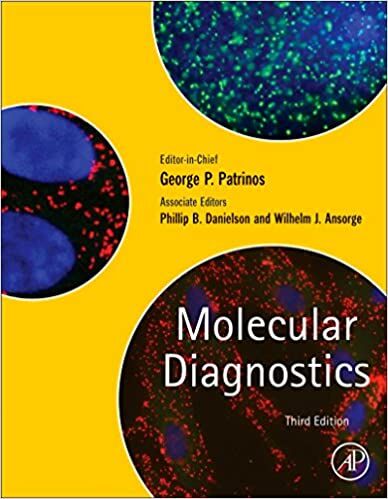

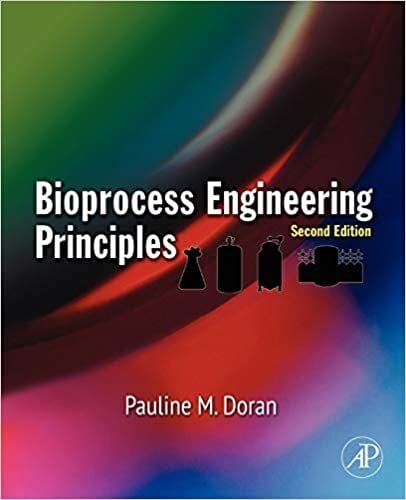

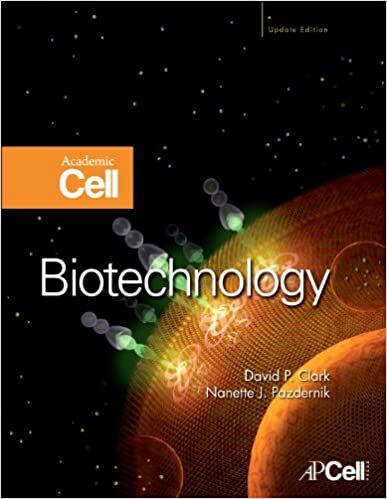
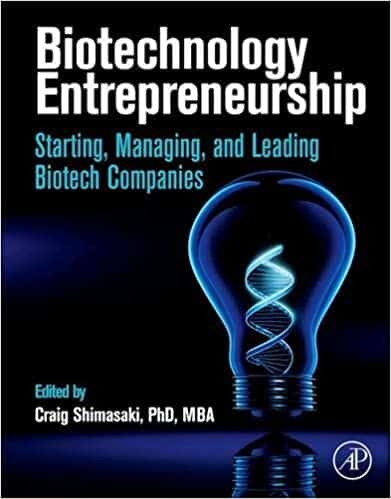


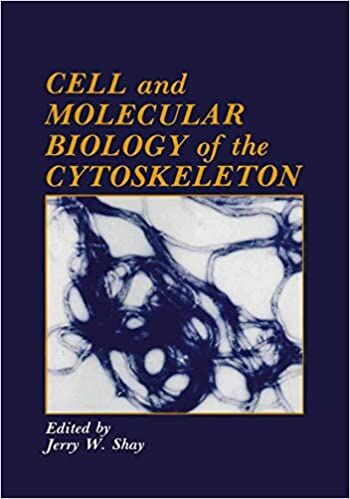
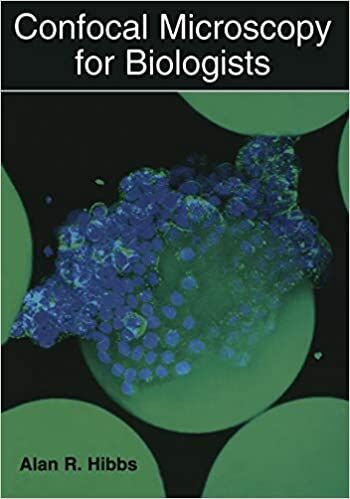
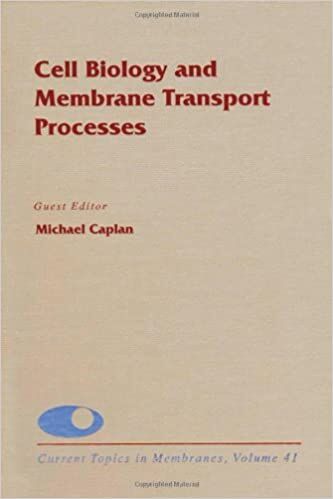
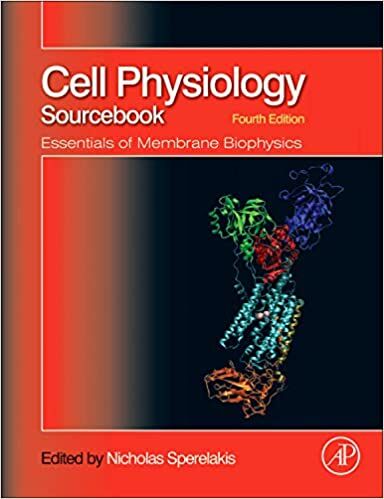




![Ettinger’s Textbook of Veterinary Internal Medicine 9th Edition [PDF+Videos] Ettinger’s Textbook of Veterinary Internal Medicine 9th Edition [True PDF+Videos]](https://www.vet-ebooks.com/wp-content/uploads/2024/10/ettingers-textbook-of-veterinary-internal-medicine-9th-edition-100x70.jpg)

![Textbook of Veterinary Diagnostic Radiology 8th Edition [PDF+Videos+Quizzes] Thrall’s Textbook of Veterinary Diagnostic Radiology, 8th edition PDF](https://www.vet-ebooks.com/wp-content/uploads/2019/09/textbook-of-veterinary-diagnostic-radiology-8th-edition-100x70.jpg)






